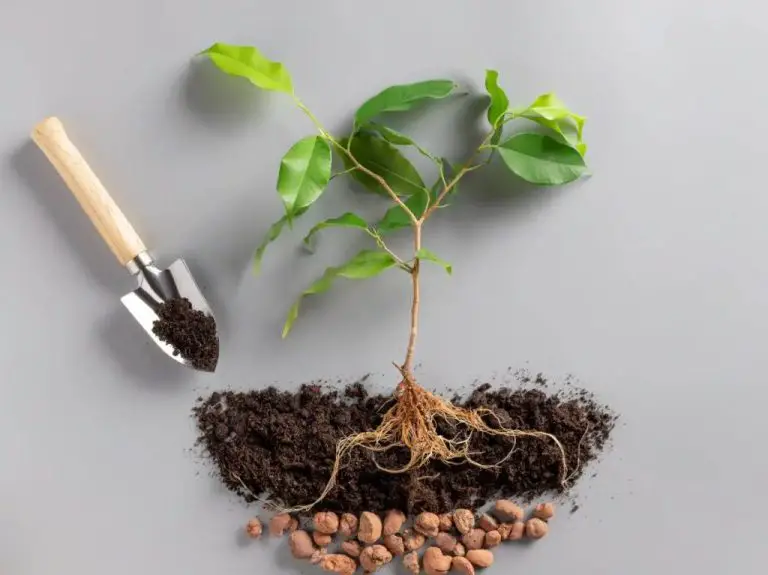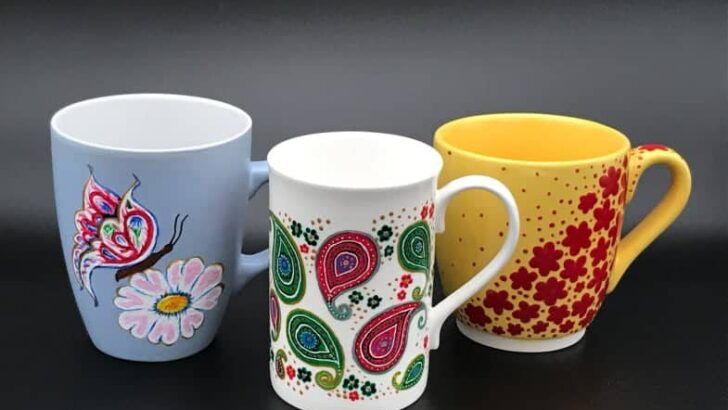How To Build A Clay Model Castle?
Building a clay model castle can be a fun and creative project for hobbyists and history buffs alike. Clay allows you to recreate the architecture and design of real medieval castles in miniature form.
Clay has many advantages as a material for model castles. It’s inexpensive, widely available, and easy to work with. Clay is very malleable, making it easy to sculpt intricate architectural details. It will hold its shape once dry, and can be painted to replicate stonework and other finishes. Clay is also durable, lightweight, and the finished model can last for many years.
You can recreate different styles of historic castles in clay. Common styles to model include Norman castles with their distinctive square keeps, concentric castles with multiple walls and baileys, and gothic castles with high towers and pointed arches. The possibilities are endless when making your own custom castle design as well.
In this guide, we’ll walk through the entire process of constructing a clay castle model from start to finish. We’ll cover planning the design, tools and materials needed, sculpting techniques, adding architectural details, painting, and how to display your finished clay creation.
Selecting Clay
There are a few different types of clay you can use to create a model castle. The most common options include polymer clay, natural clay, paper clay, and air-dry clay. Each has its own pros and cons to consider.
Polymer clay is an oil-based modeling clay that hardens when baked in the oven. It comes in a variety of colors and brands like Sculpey and Fimo are popular options. Polymer clay is lightweight, durable, and easy to sculpt fine details with. The downside is it can be more expensive and requires baking to harden.
Natural clays like pottery clay are inexpensive and eco-friendly. They can be molded when wet, then harden when left to air dry. Natural clay is more difficult to sculpt intricate details with compared to polymer clays. Pieces may also crack or break more easily.
Paper clays add cellulose fiber to natural clay, making them lightweight when dry. Like natural clay, paper clays are affordable and environmentally friendly. They are easier to sculpt details with than pure natural clays. Paper pieces are fragile though and require sealing for protection.
Air-dry clays are made of natural materials mixed with binders that harden as they dry without needing to bake. Brands like Crayola Model Magic are simple to use for beginners. Air-dry clays are not as durable for long-lasting pieces but work well for temporary projects.
For beginners creating their first model castle, polymer clays like Sculpey are a good choice. They are easy to work with, hold detail well, and create durable finished pieces. Start with a few basic color blocks for an inexpensive way to try polymer clay modeling.
Tools and Materials
When building a clay castle, having the right tools and materials on hand will make the process easier and allow you to add fine details. Here are some essential items to have:
Essential Tools
- Clay sculpting tools – These will allow you to shape, carve, and texture the clay. You’ll want tools like loops, ribs, cutters, and smoothers.
- Paint brushes – For adding color and details, you’ll need a variety of brush sizes and shapes.
- Containers for water – Keep water handy for smoothing clay and cleaning brushes.
- Acrylic paints
- Smooth work surface – This provides an even base for sculpting.
Optional Extras
These items can add flair and interest to your finished clay castle:
- Glitter
- Fake moss, leaves, vines
- Toothpicks for sculpting fine details
- Craft glue for attaching pieces
- Varnish for sealing the finished piece
Having the right assortment of clay tools, paints, and extras will allow your creativity to shine when building your model castle. Pick out a variety of sculpting tools so you can carve fine details. Gather brushes in different sizes to handle broad strokes and intricate accents. And don’t forget fun embellishments like glitter to make your castle truly unique!
Planning the Castle
Before starting to build your clay model castle, it’s important to spend time planning the details. Consider the style, size, and level of detail you want for your castle. Gothic, medieval, or fantasy castles all have distinct architectural features you may want to incorporate. Decide if you want a small desktop model or a larger, more intricate castle scene.
Make some rough sketches of the castle layout and different views. Draw the wall shapes, towers, gates, and other structures. Having a plan to follow will make constructing the clay model much easier. You may want to research castle floor plans or look at photos for inspiration.
Think about the focus for your castle model. Will all sides be highly detailed or mainly one facade? Consider how much interior detail to add through doors, windows or removable roofs. The more planning at this stage, the clearer your vision will be when building the clay model.
Make draft plans showing the castle from different angles. Having good references will guide you during the sculpting process. Tweak the sketches until you have a cohesive idea of the style, size, and level of detail you aim to achieve. With the plans in place, you’re ready to begin sculpting your castle masterpiece.
Sculpting the Base
A sturdy base is crucial for supporting the weight of a clay castle. Start by rolling out a large slab of clay about 1-2 inches thick, using a rolling pin on a flat surface. Smooth out any cracks or bumps with your fingers or clay sculpting tools.
To create the look of stone or rock, imprint the clay slab by pressing in textured items like crumpled foil, burlap, etc. You can also use clay tools to carve patterns or textures into the clay. Drag tools like wooden skewers at angles or in circular motions to get different effects.
For a grassy base, roll out thin snakes of green clay and lay them down in rows, trimming to flatten the tops. Use a comb or toothpick to add texture. Press small flowers or rocks made of colored clay into the grass clay as accents.
Make sure the edges of the base are thicker and taper inward slightly. This will make the base more stable and prevent cracking. Allow it to dry completely before constructing the castle on top.
Building the Structure
Constructing the walls and towers is one of the most important steps in building your clay castle. Here are some tips for achieving the best results:
Build on a solid foundation. Make sure your castle base provides a level, stable surface before adding vertical structures. Any wobbling at the base will transfer up and make your towers prone to leaning or falling over.
Roll out long snakes of clay to build up the walls uniformly. Using consistent pieces will help keep your lines straight. Smooth and blend seams as you go.
Cut clay slabs for tower floors. Score the surfaces with a knife and add slip before stacking to improve adhesion.
Use cardboard or plastic shapes as temporary support structures inside towers if needed while clay dries.
Carve lines into wet clay to define stonework or bricks. Letting clay firm up slightly will help keep edges clean.
Build up height gradually. Allow lower sections to dry before adding upper levels to prevent collapses. Use acrylic gel or othersupports if needed.
Work symmetrically to keep towers even on all sides. Step back periodically to check proportions.
Taking it slow, keeping walls uniform, and letting sections dry thoroughly will result in a sturdy castle that looks like an architectural marvel.
Adding Details
Adding fine details and decorative elements to your clay castle can really bring it to life and give it personality. You can embellish it with elements like windows, doors, battlements or other architectural features that suit the time period or style of your castle.
For medieval castles, classic elements to consider adding include:
- Arrow slits, tall vertical windows for archers to shoot arrows from
- Cross-shaped arrow slits
- Decorated crenellations or battlements along the tops of towers and walls
- Faux wooden doors with cross beam or iron bar details
- Small peaked or rounded windows
- Stone trim accents around doors and windows
For more fantastical castles, you can add fun details like:
- Intricate stonework or relief carvings
- Ornate spires
- Sculpted creatures like dragons or gargoyles
- Royalty figures or coats of arms
- Magic symbols
- Twisting vines along the walls
Take your time adding all the special touches that will make your castle unique. The details you choose can bring different architectural styles and time periods to life.
Painting
Painting brings the model to life with color and realism. When painting a clay castle, recommended paints include acrylics, watercolors, and air-dry clays. Acrylics provide rich, opaque coverage for a uniform look. Watercolors can be thinned and layered to create translucent effects. Air-dry clays come in a variety of premixed colors for quick detailing.
Recommended brushes are soft bristle brushes for acrylics and watercolors. Detail brushes allow you to paint small areas like windows or molding. You may also use foam brushes for large, smooth surfaces. Avoid using hard bristled brushes that can leave visible brush strokes.
Paint in thin layers, allowing proper drying time between coats. Thin paints with water or acrylic medium as needed. Use a mix of paint techniques to add interest. Dry brushing picks up texture and adds a worn, aged look. Stippling creates a mottled effect. Sponging adds a varied, organic texture. Washes pool subtly in crevices. Airbrushing can create soft gradients.
Plan out your color scheme beforehand. Consider using darker, richer tones for the base and lighter versions of the same hue for upper levels and highlights. Paint shadows in areas that would not receive natural light. Accent with metallic paints for a regal look. Add finishing touches like flags, foliage, and critters to bring your castle to life.
Finishing Touches
Once the main castle structure and details are complete, it’s time to add those final finishing touches that will really make your clay castle come to life. This is when you can get creative with adding realistic elements through the strategic use of moss, flocking, glitter, and other materials.
Apply bits of light green moss throughout the castle walls and roof to replicate the look of aged, weathered stone. Use dark green clump foliage for larger moss patches. Flocking powder sprinkled lightly over areas can mimic grass, bushes and other greenery growing around the castle.
Metallic gold glitter brushed on to certain architectural details adds a touch of regal elegance. Other options include adding cotton wisps for smoke effects, a clear gloss sealant for wet or icy areas, or even cracks and damage if you want more of an old crumbling ruin aesthetic.
For the base, construct a simple rectangular display out of wood, cardboard or thick foamcore, covered in textured material like clay, plaster, tiles or fake grass turf. Consider adding roads, a moat, trees, rocks, walls or other structures leading up to the castle. Place your clay castle securely on top and highlight it with accent lights or fake water effects if desired.
Taking the time to creatively embellish and display your castle model will make an eye-catching centerpiece that looks like it’s straight out of a medieval tale.
Displaying and Preserving
Once your clay castle is complete, you’ll want to find the perfect spot to display it. Choose a location free from direct sunlight, which can cause clay sculptures to fade and crack over time. Avoid placing it near heating vents or anywhere with fluctuating temperatures.
For the best preservation, display your clay castle under a glass cloche or clear acrylic case. This protects the sculpture from dust buildup while still allowing it to be viewed. Wipe down the inside of the case periodically to keep it free of dust. You can also apply a protective sealer or varnish to the clay, but test it on an inconspicuous area first to ensure it does not affect the clay color or finish.
Additionally, avoid placing the castle in areas prone to vibration or disturbance. Move it gently when needed, supporting the base fully. With proper display and care, your sculpted clay castle can be enjoyed for years to come!



